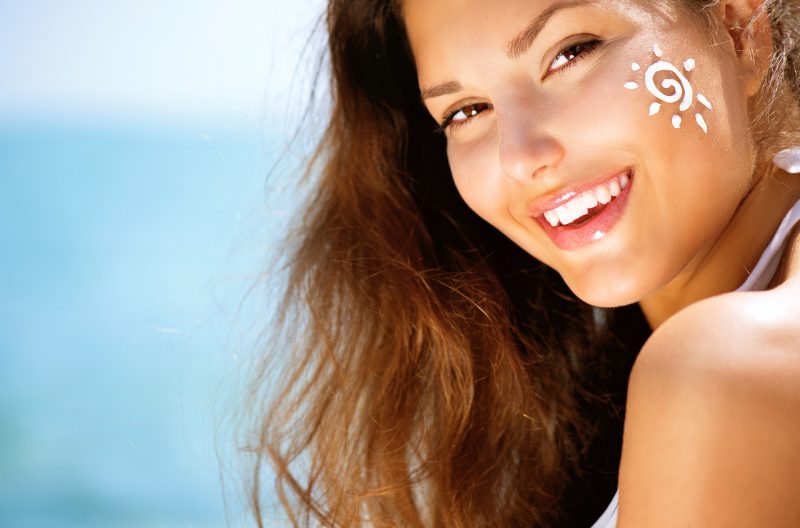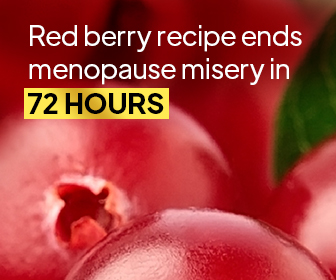Sunscreen is a necessary part of life nowadays. And we all know why. The dangers of sun exposure are real. Dermatitis, carcinoma, melanoma, permanent sun damage, wrinkles, age spots – the list of the damage caused by the sun is long (and scary)!
Yet, our love affair with the sun, the beach, tropical vacations, swimming in the sea, and looking bronzed persists. It reminds us of the carefree summers of our youth or of the thrill of a journey on a cruise or to the tropics. So how do we reconcile this?
Well, the answer is easy: sunscreen! Fortunately, there are so many to choose from these days, with varying degrees of protection factors. Some offer protection from both ultraviolet A and B rays. Others moisturize, prevent wrinkles, absorb oil, or even act as makeup, either as a foundation or setting powder.
We are taking the deep dive into sunscreens for your face. Learn how to protect yourself from such environmental pollutants. We want to know what makes a great sunscreen: what it is, how it works, whether it clogs pores, or protects from other harms, or has harsh ingredients, and whether it works well or not at all. Read on to learn more so you can relax and enjoy the sunshine!
What is Sunscreen?
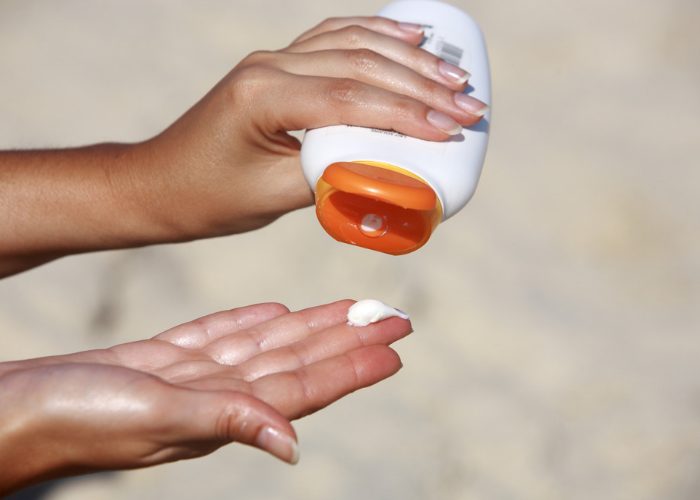
Sunscreens are everywhere, and with good reason. The sun’s ultraviolet radiation is now a known carcinogen (cancer-causing substance).[1] There are two types of ultraviolet rays that reach the earth: UVA and UVB. These rays can penetrate clouds, glass, and even your skin. UVA/UVB rays work in tandem to cause sufficient damage to the skin which helps cancers develop.[2] Both UVA and UVB rays are dangerous all year round, even in winter or in the shade.[3] This is because it is the radiation from the sun, not just its rays, that cause damage to our skin.[4] This radiation is reflected off of surfaces like sand, water, and even grass.
There is no safe respite from the sun’s power to damage our skin. Every time we tan or enter into the sun’s light, we damage our skin. And, as this damage increases, so does our risk for all types of skin cancer.[5] Sunscreen helps absorb the sun’s rays or reflects it, shielding your skin from the sun’s harmful rays. There are two different rating factors that help indicate the strength of sunscreens:
- SPF (Sun Protection Factor): SPF measures the strength of protection against the sun’s UVB rays. It indicates how long it will take the sun’s UVB rays to burn our skin.[6] So, if your sunscreen’s SPF rating is 50, it will take the sun 50 times longer to burn your skin.
- PA (Protection Grade of UVA): PA ratings measure protection against UVA rays. It is followed by a series of plus signs: PA+, PA++, PA+++ or PA++++. These plus signs determine the strength of the protection.[7]
Sunscreen vs. Sunblock: Is there a difference?
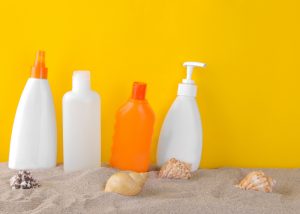
Sunscreen is the most common version of sun protection that we see and use. However, sunblock is also available on the market. Some scientists disagree with the use of the word “sunblock” as it improperly advertises that sunblock is somehow stronger, or less penetrable, than sunscreen.
Sunscreen offers chemical sun protection. Chemical sunscreens are lightweight organic, carbon-based protectants. They change the UVB rays to heat and release that heat from the skin. This chemical reaction protects our skin from the sun’s penetrating rays
On the other hand, sunblock typically offers physical sun protection. It provides a physical barrier between the UVA/UVB rays and our skin. These are inorganic, mineral sun creams that are notable because they are made with titanium dioxide and zinc oxide to block and scatter the sun rays.[8] They are very beneficial for athletes, skiers and surfers, and other outdoor or sports enthusiasts who spend several hours, often during peak hours, in direct sunlight.
However, most modern sunscreens contain a mix of both chemical and physical ingredients so that we get the best of both worlds in our daily sun protection.
Effects of sunscreen on environmental health

Eighty-five percent of Caribbean reefs have disappeared in the past 50 years, 99% of the reefs in the Florida Keys have disappeared in the same amount of time, and 40% of the Great Barrier Reef has disappeared in the past 30 years.[9] Scientists determined that sunscreen that washes off our bodies in the ocean amplifies the amount of sunlight reaching the reef, and hastens the bleaching being done by global warming.
Specifically, between 6,000 and 14,000 tons of chemical sunscreen washes off divers each year.[10] There are four main chemical ingredients that are damaging the coral reefs and phytoplankton:
- Oxybenzone (Benzophenone-3, BP-3) – Disrupts coral reproduction, causes coral bleaching, and damages coral DNA. Oxybenzone is found in over 3500 sunscreen products worldwide.
- Butylparaben – Causes coral bleaching.
- Octinoxate (Ethylhexyl Methoxycinnamate) – Causes coral bleaching.
- 4-methylbenzylidene camphor (4MBC) – Causes coral bleaching. Allowed in Europe and Canada, not in the USA or Japan.
Furthermore, one physical sunscreen, titanium dioxide, is also gaining attention for being consumed by marine wildlife and for having the potential for causing harm to them.[11]
In spite of its potential harm to the environment, sunscreen should be a very important part of everyone’s daily skin care routine. With time and legislation, they will be designed to be safer for the environment. Meanwhile, it is our responsibility to protect ourselves and the environment with sunscreens that are “coral-reef friendly” or “reef safe.”
Why Wear it?
Sunscreen is vital to maintaining not just beauty, but good health. Without it, we cause permanent harm to our skin and health. Here are a few reasons why it is so important to apply sunscreen daily.
1. Reduces risk of skin cancer
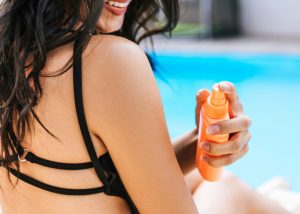
Skin cancer is the most common form of cancer in the United States.[12] Skin cancer has two major types most often caused by UV radiation from the sun or from tanning beds: melanoma and carcinoma.
Melanoma occurs when UV radiation damages skin cells.[13] These unrepaired skin cells then multiply rapidly and form malignant tumors. Carcinoma, or basal cell carcinoma, occurs when abnormal, uncontrolled growths or lesions in the deepest layer of the skin.[14] Carcinoma almost never spreads beyond the original tumor site and becomes life-threatening. Early detection of both types of skin cancer is vitally important.
According to skincancer.org, one person in the U.S. dies from melanoma every hour.[15] It is estimated that a whopping 9,320 people in the U.S. will die from melanoma in 2018. Furthermore, 1 in 5 Americans will develop skin cancer in the course of their lifetime, and 50% of Americans who live to age 65 will have skin cancer at least once.[16]
So, regular daily use of an SPF 15 or higher is vitally important. In fact, this one simple act reduces the risk of developing melanoma by 50%.[17]
Carcinoma is equally threatening and can be caused by cumulative sun exposure. About 5.4 million new cases of carcinoma are diagnosed each year in the United States.[18] Eight out of ten of these cases are cancerous. Although deaths from carcinoma are uncommon, the cases are growing in frequency due to more sun exposure.
You should always keep an eye on your moles. If you see any changes in your moles, it’s vital to consult your doctor.
2. Prevents premature aging
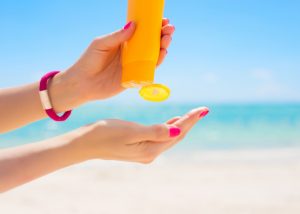
UV exposure is shown to cause 80% of the visible signs of skin aging.[19] It destroys collagen and connective tissue beneath the top layer of the skin.[20] This causes wrinkles, brown “liver” spots, and loss of skin elasticity.[21] For example, look at the difference between skin tone, wrinkles, or pigmentation on the underside of your arm and the top side of the same arm. Usually, the top side of the arm has had more exposure to the sun and shows greater sun damage.[22]
The sun’s UV rays damage our skin’s current store of collagen and its ability to produce more collagen. Thus, the sun can damage our skin’s ability to repair itself from the damage it has already caused. However, because photo-aging of the skin is cumulative, it is never too late for you to start protecting your skin from the sun’s harmful rays. Wear sunscreen daily to protect you from harmful UV rays.
3. Protects from permanent sun damage
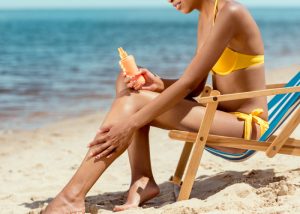
UV rays burn the skin. Sunburn is the damage to our skin’s cells when we overexpose it to the sun.[23] The absorption of energy from UV rays damages the cells and causes the skin to burn. Many episodes of severe sunburn contribute to the formation of melanoma cancers, while repeated sun exposure causes carcinoma cells to form.[24] This means that sun exposure, regardless of whether it’s prolonged exposure or repeated sunburns, can still cause skin cancer.
In addition, repeated sun exposure causes a number of other issues including melasma, skin lesions, and liver spots. Using a sun protectant every day protects your skin and prevents further damage from the sun.
Another major benefit of sunscreen is that it can help prevent the development of cold sores.
6 Different Types of Sunscreen
Because sun protection is a daily necessity, and there are countless different types on the market. You can find sunscreens at drug stores, makeup counters, dermatologists offices or even make your own with ingredients you already have.
Let’s take a look at six different types. We’ll look at what they are and how they work so you can make an informed decision about which one fits is the best into your lifestyle.
1. Zinc oxide sunscreen
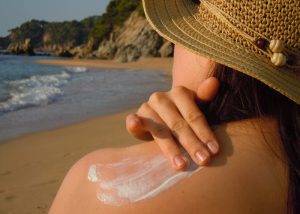
This, along with its partner in physical sunblock, titanium dioxide, are mineral sun creams. They provide a full physical barrier against sunshine. They actually sit on top of the skin in an opaque white layer that deflects and scatters UVA and UVB rays.
Zinc oxide is a great protector for the skin against the sun. However, due to its chalky white appearance, it is most viable for athletes, like surfers, skiers, and other outdoor enthusiasts or athletes. It is not waterproof or sweat-proof, and still needs reapplication every two hours.
The value of zinc oxide is that it provides full sun protection from both UVA and UVB rays, and it works immediately. Titanium dioxide is currently being investigated for being potentially harmful to marine wildlife, as its nanoparticles are not dissolved by water and are being ingested by sea creatures. Zinc oxide, however, is safe for the environment.
2. Natural sunscreen
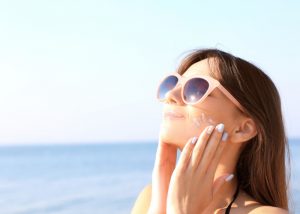
Some natural sunblock consumers question why anyone would use a chemical cream when trying to avoid toxins or other harmful ingredients? Natural sunscreens avoid chemicals, artificial ingredients, and fillers. Instead, these sun protection creams are sourced from plant compounds that provide an SPF. These sun lotions provide physical sun protection.
Typically, a natural sun protectant refers to a mineral sunscreen, like zinc oxide. But the difference between them is that natural sunscreens combine mineral ones with other natural ingredients to enhance the ease and wearability of the sunscreen.
But these lotions do not contain certain specific ingredients. In addition to avoiding those that harm coral reefs, natural sun protectors do not contain the following ingredients:
- Parabens (butyl-, ethyl-, methyl, or propyl-) which can cause hormonal disruptions, allergic reactions, and reproductive and developmental toxicity
- Homosalate which are hormone disruptors
- Methylisothiazolinone (MI) which is a preservative that is highly allergic
- Avobenzone which has a high rate of skin allergy
3. Biodegradable sunscreen
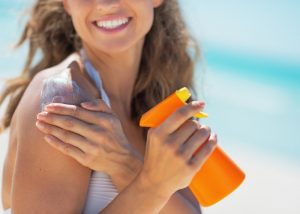
Biodegradable sunscreens are now necessary for travel to certain destinations. For example, many destinations in Cancun, Mexico, require you to bring a biodegradable formula of sun lotion or else it will be confiscated (and a bottle there can cost $25-30!).[25]
In May 2018, the State of Hawaii also passed legislation banning the use of sun protection that is not coral reef safe.[26] While biodegradable sunscreens are different from reef-safe ones, they are actually very similar.
A biodegradable formula is largely the same as reef-safe formulas. However, it includes two additional restricted ingredients: PABA and Camphor. The following is a list of restricted ingredients you should look out for when buying biodegradable or reef-safe sunscreen:
- PABA (biodegradable only)
- Camphor (biodegradable only)
- Octinoxate (biodegradable and reef-safe)
- Oxybenzone (biodegradable and reef-safe)
- 4-methyl benzylidene (biodegradable and reef-safe)
- Butylparaben (biodegradable and reef-safe)
Any other ingredients, either natural or chemical, may be included in its sun protection formula. These lotions may be physical or chemical sun protections, depending on their ingredients.
Remember to always read the label! This way, you can verify completely that none of the ingredients listed above are in the formula. This will ensure that the formula is biodegradable, regardless of whether the bottle says that it is.
4. Powder sunscreen
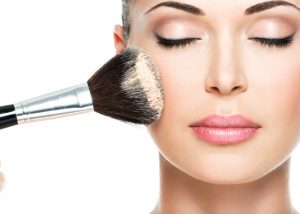
Setting powders have advanced in the past few years with the advent of mineral makeup. Now, setting powders are also powder sunscreens that set makeup, finish our face, hide pores, and protect us from the elements.
What’s more, they are natural and mineral. Thus, they are a physical sun barrier that sits on top of the skin to defray UV rays from getting to the skin. These multitaskers are made up of three minerals: zinc oxide, titanium dioxide, and iron oxide particles. Furthermore, powder sunscreen is non-comedogenic, meaning it is formulated to not clog your pores.
Setting powders come in varying colors or with no color at all, so they are suitable for all skin tones. Powder sun protectants do require that your makeup or moisturizer are fully absorbed before applying them. This will ensure that they last as long as possible. The only downside: they may create a noticeable white cast to the skin. But it may be worth it in the long run, as the payoff is excellent.
Powder sun protectants are also easy to reapply, and often come in an easy-to-carry tube that fits inside any size purse or pocket.
5. Coconut Oil
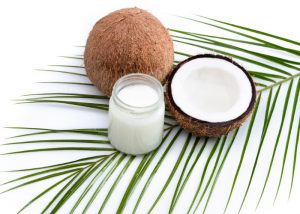
Yes, coconut oil is a sunscreen! Coconut oil has a natural SPF of 7.[27] This SPF is not recommended as sufficient sun protection, as it protects you from only 20% of the sun’s radiation (an SPF 30 blocks 90%).[28] However, coconut oil is a traditional remedy for sun protection that also works as an antioxidant. Thus, coconut oil heals cells while protecting you from sunburn and damage.
A homemade coconut oil sunscreen is an ideal choice for people who have allergies to commercial sun creams. The testimonials of people who swear by coconut oil as a sunscreen are that they never burn, and always have a beautiful tan. The SPF of coconut oil alone is quite low, however there are ways in which you can increase the sun protection by mixing in other ingredients.
6. SPF with PA
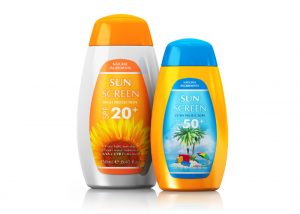
The Asian variation in sun protection is two-fold. First, it shields our skin from both UVA and UVB radiation. Secondly, it beautifies in our daily skin care regimen. These sunscreens are easy to find online, and are also available in beauty stores like Sephora and in department stores. Some drugstores also carry Asian brands of skincare and sun protection.
Though the PA system is not found in many U.S. brands yet, it is found in some brands that we are already familiar with. Shiseido, Bioré, Murad, Laura Mercier, and Kate Somerville all offer sunscreens with both SPF and PA ratings. These blends are most often chemical sun protection, but there are also natural blends available.
The Best Sunscreen for Your Face
With so many options for sunscreen, it can be overwhelming trying to decide which type is the best, and then which brand to buy. So, we are here to take the guesswork out of the equation for you. We have prepared a list of the best sun protectors for you to choose from.
Zinc Oxide – Neutrogena Sheer Zinc Dry Touch Broad Spectrum SPF 50
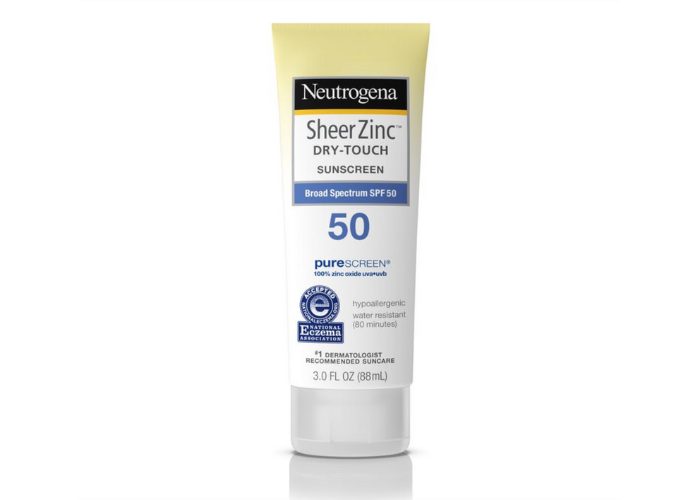
Image credit: Neutrogena
- SPF 50
A zinc oxide sunblock provides some of the best protection from the sun that you can find. But who really wants to wear an opaque white nose? Neutrogena took zinc oxide and made it into a sheer application for the face. Thus, no harsh white cast! With 21.6% zinc oxide and other beneficial ingredients for the skin, like flower extracts, this sunblock is hypoallergenic and water-resistant up to 80 minutes. Not only that, it does not contain any ingredients that destroy the coral reef barrier or marine wildlife.
Natural – Badger SPF 35 Sport Sunscreen Cream
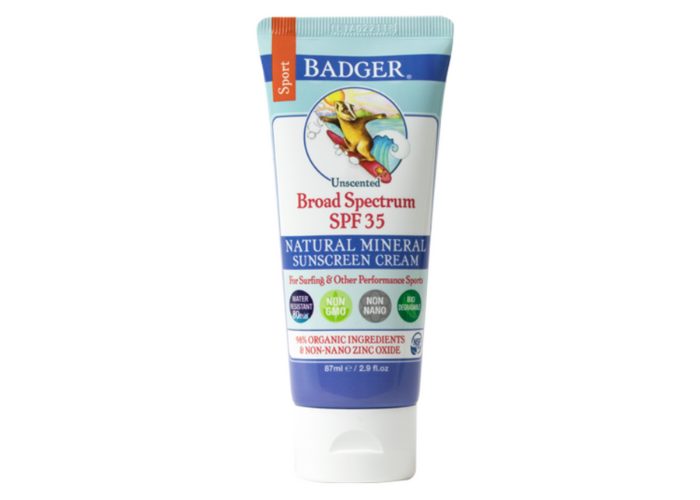
Image credit: Badger Balm
- SPF 35
- PA+++
Natural sunscreens use only organic natural ingredients, and Badger is well-known for its range of ethical sun creams. This sport sun protection cream is water and sweat-resistant for 80 minutes. With 22.5% zinc oxide, it has just 4 more ingredients: sunflower oil, beeswax, vitamin E, and jojoba oil. It is non-comedogenic, fragrance-free, reef-safe, and biodegradable.
Powder – Brush on Block SPF 30 Natural Mineral Powder Sunscreen
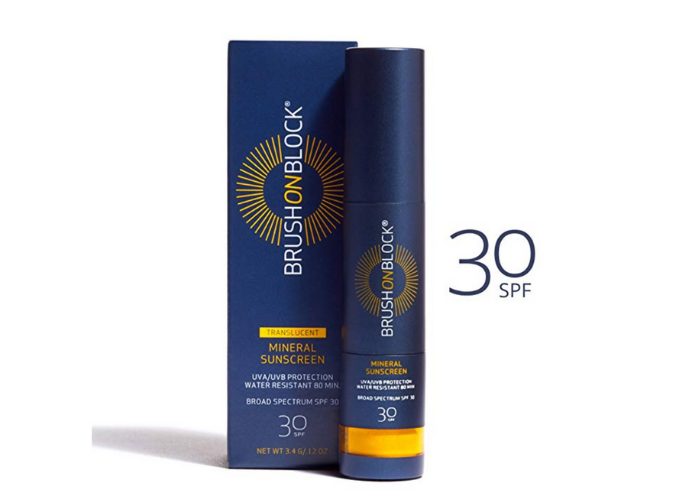
Image credit: Amazon
- SPF 30
Powder sunscreens make life so easy. And Brush on Block is one of the most popular powder sunscreens on the market today. Brush on Block is natural and chemical-free, as well as safe to use every day and to reapply as necessary. And, the bottle is a handy portable size! It contains 15% titanium oxide and 12% zinc oxide, along with mica and iron oxides to provide broad-spectrum protection and impart a little glow. In addition, Brush on Block also contains green tea extract, chamomile, honeysuckle, rice lipids, and safflower oil. These ingredients provide ultimate benefits to hydrate, balance and perfect your skin.
Biodegradable – Alba Botanica Fragrance-Free SPF 30 Sunscreen
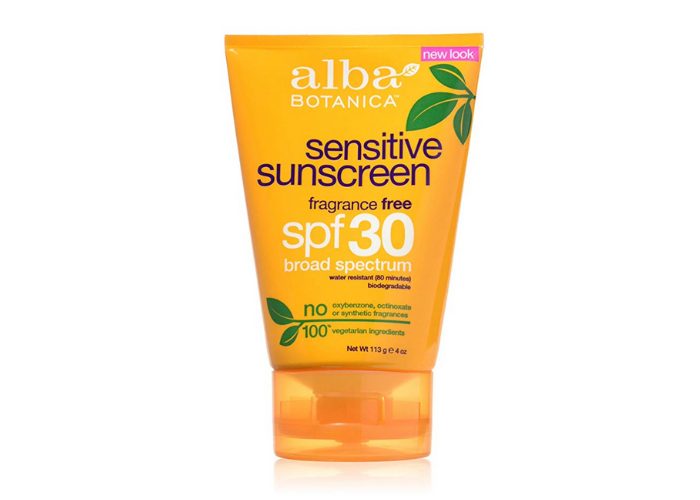
Image credit: Amazon
- SPF 30
This Alba Botanica Fragrance-Free SPF 30 sunscreen is not only biodegradable, it’s also free from all ingredients that destroy coral reefs. It has a host of emollient and beneficial ingredients to soften and smooth skin, while preventing sun damage and wrinkles. It is non-comedogenic, hypoallergenic, and isn’t tested on animals. In addition, it is broad spectrum and water-resistant up to 80 minutes. However, this sun cream does contain avobenzone, which is noted as having a high rate of skin allergy.
Are you vegan? Or are you on a gluten-free diet? You’ll be happy to learn that this Alba sunscreen is both vegan and gluten-free!
Coconut Oil – Keeki Broad Spectrum SPF 45 Sunscreen
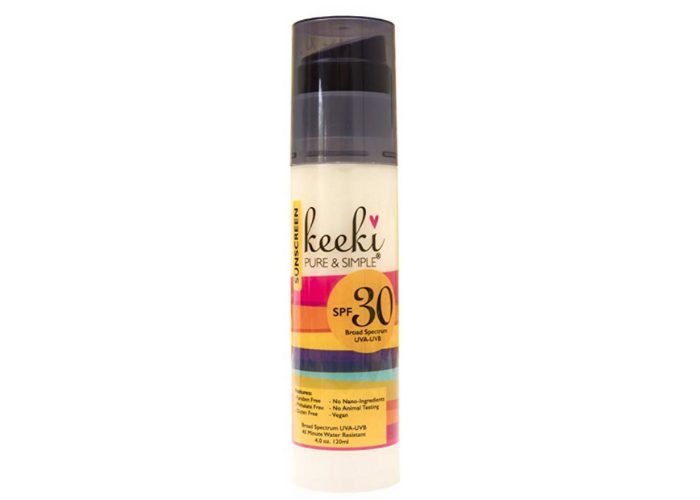
Image credit: Amazon
- SPF 45
Keeki’s Broad Spectrum natural sunscreen is made with two physical sunscreens, zinc oxide and OM cinnamate. Then, it adds a host of wonderful oils which add additional layers of sun protection as well as soften the skin, like coconut, aloe vera, vitamin E oils, sunflower, cocoa, and jojoba.
This is a natural sunscreen that is cruelty-free, vegan, all natural, and paraben free. It is water-resistant for 40 minutes.
SPF with PA – Biore UV Aqua Rich Watery Essence Sunscreen
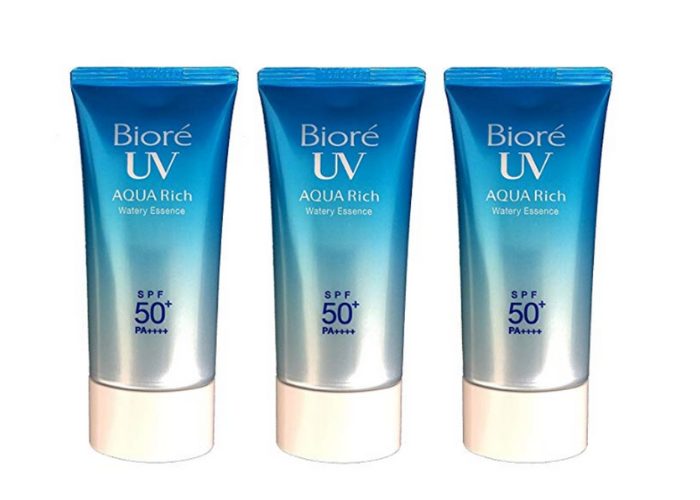
Image credit: Amazon
- SPF 50+
- PA++++
Biore Watery Essence is an SPF 50+ sun lotion with a PA++++ rating. Its legions of fans adore it for keeping skin moist and plump while providing superior protection. It glides on smoothly and stays in place. This is a broad-spectrum sun protector that is water-resistant for 80 minutes.
Simple Tips for Picking the Right Sunscreen
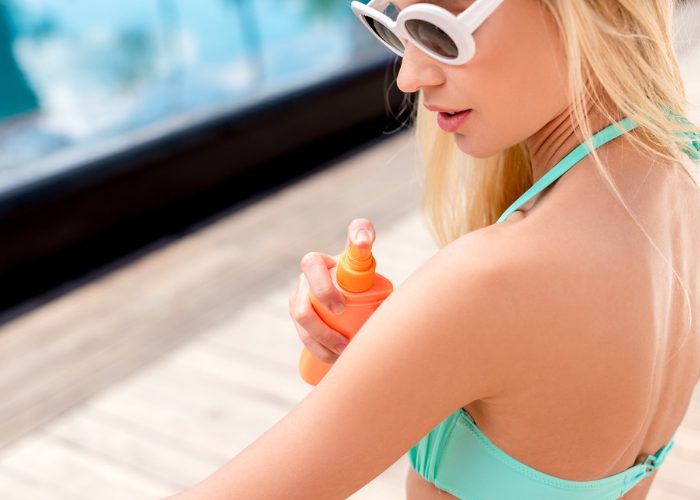
- Look for non-comedogenic products. These products are formulated so they don’t clog pores. Avoid silicones, mineral oils, plant waxes, and/or heavy butters. Try to find a sunscreen that has lightweight oils like jojoba, rosehip, sea buckthorn, or grapeseed that can moisturize without clogging pores.
- Check SPF and PA ratings. Make sure you are getting a high level of protection from both UVA and UVB rays. But you should still re-apply high SPF/PA sunscreen every two hours!
- Be aware of the expiration date. There should be an expiration date posted clearly on the bottle. In the event you can’t find one, the FDA states that sun lotion is good for three years after purchase.[29]
- Find varieties with additional benefits. When looking for a sunscreen for the face, find one that offers additional protections and benefits. Use a sun cream that contains natural fruit extracts or oils, or extracts that encourage cell renewal while protecting you from damage.
- Choose oil-absorbing options. Some of us want a sun protection made specifically for the face that does not leave an oily or shiny appearance or clog pores. Look for sunscreens that are oil-absorbing, mattifying, or anti-shine.
- Check color vs. skin tone. There is a bevy of tinted sunscreens available to match any skin tone without giving a white cast to the skin. Be sure to shop at a store that allows you to match shades with your skin tone before you buy!
9 Ways to Protect Yourself From the Sun
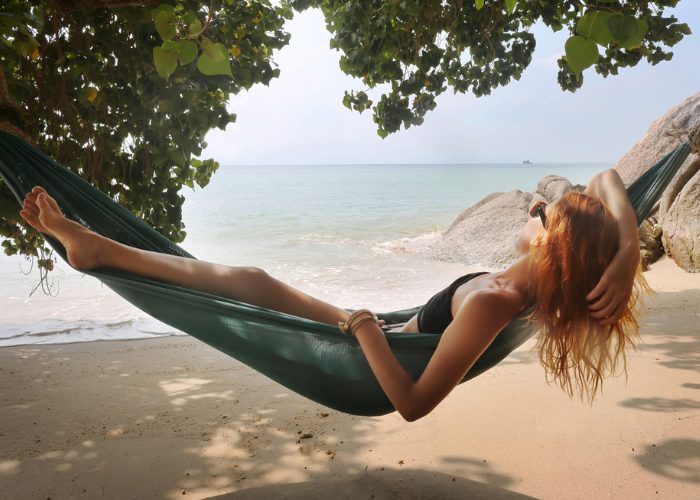
- Apply enough. Most people only apply 25-50 percent of the recommended amount of sunscreen. Apply 1/3 – 1/4 teaspoon of sunscreen to your face, and about 1 oz (or enough to fill a shot glass) to the rest of your body.[30]
- Apply 15 minutes before going outdoors. As per the instructions, make sure to give your sun cream sufficient time to sink into your skin before heading outdoors and into the sun. This will ensure that you are protecting your skin the best way possible from sun damage.
- Protect your lips. Skin cancer can also form on the lips so it’s worth looking for lip balms with UV ray protection.
- Reapply regularly. When outdoors, reapply your sunscreen approximately every two hours. If you’re doing water sports or vigorous activities that make you sweat, reapply according to the directions on the bottle.
- Seek shade. Remember that the sun’s rays are strongest between 10 a.m. and 2 p.m. If your shadow is shorter than you are, seek shade and wear protective clothing. Even if you’re in the shade, continue to use your sunscreen. The radiation from the sun is damaging if any of it penetrates to reach your skin![31]
- Wear protective clothing, such as a lightweight long-sleeved shirt, pants, a wide-brimmed hat, and sunglasses, when possible.
- Use extra caution near water, snow, and sand. These reflect the damaging rays of the sun, which can increase your chance of sunburn.
- Check yourself. If you notice anything changing, itching or bleeding on your skin, see a board-certified dermatologist. Skin cancer is highly treatable when caught early.[32]
- Use it all day every day. UV rays are harmful in all seasons and weather conditions. You should use sunscreen to protect your skin all year round.
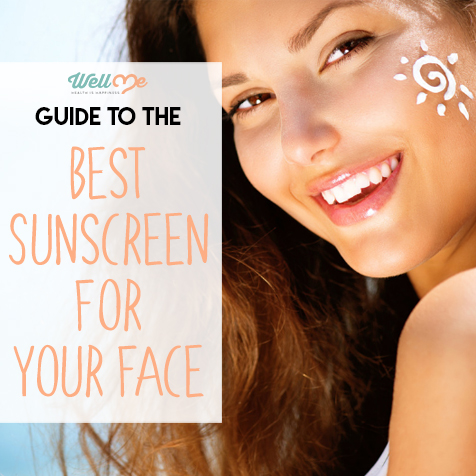
Conclusion
The best sunscreen is the kind that you will use every day. So, find one that gives you the most benefit and the most incentive to use it regularly and throughout the day. It is truly the most important thing that you can put on your face.
References
- [1] https://www.aad.org/media/stats/prevention-and-care/sunscreen-faqs
- [2] https://www.skincancer.org/prevention/uva-and-uvb
- [3] https://uihc.org/health-topics/selecting-sunscreen
- [4] https://www.skincancer.org/prevention/sun-protection/shade/seek-the-shade
- [5] https://www.aad.org/media/stats/prevention-and-care/sunscreen-faqs
- [6] https://phcogj.com/sites/default/files/10.5530pj.2016.3.1.pdf
- [7] https://phcogj.com/sites/default/files/10.5530pj.2016.3.1.pdf
- [8] https://www.skincancer.org/skin-cancer-prevention/sun-protection/sunscreen/
- [9] https://www.sierraclub.org/sierra/your-sunscreen-destroying-coral-reefs
- [10] https://www.badgerbalm.com/s-35-coral-reef-safe-sunscreen.aspx
- [11] https://phys.org/news/2018-08-scientists-titanium-dioxide-sunscreen-polluting.html
- [12] https://www.cdc.gov/cancer/skin/statistics/index.htm
- [13] https://www.skincancer.org/skin-cancer-information/melanoma
- [14] https://www.skincancer.org/skin-cancer-information/basal-cell-carcinoma
- [15] https://www.skincancer.org/skin-cancer-information/skin-cancer-facts#melanoma
- [16] https://www.skincancer.org/prevention/graphics/handbook
- [17] https://www.skincancer.org/skin-cancer-information/skin-cancer-facts#melanoma
- [18] https://www.cancer.org/cancer/basal-and-squamous-cell-skin-cancer/about/key-statistics.html
- [19] https://www.ncbi.nlm.nih.gov/pmc/articles/PMC3790843/
- [20] https://www.sciencedirect.com/science/article/pii/S0022202X15412540
- [21] https://www.sciencedirect.com/science/article/pii/S0022202X15412540
- [22] https://www.sciencedirect.com/science/article/pii/S0022202X15412540
- [23] https://www.sciencelearn.org.nz/resources/1304-positive-and-negative-effects-of-uv
- [24] https://www.ncbi.nlm.nih.gov/pubmed/10994463
- [25] https://www.sierraclub.org/sierra/your-sunscreen-destroying-coral-reefs
- [26] https://www.capitol.hawaii.gov/session2018/bills/SB2571_.HTM
- [27] https://www.ncbi.nlm.nih.gov/pmc/articles/PMC3140123/
- [28] https://mayoclinichealthsystem.org/hometown-health/speaking-of-health/myth-or-fact-coconut-is-an-effective-sunscreen
- [29] https://www.fda.gov/Drugs/ResourcesForYou/Consumers/BuyingUsingMedicineSafely/UnderstandingOver-the-CounterMedicines/ucm239463.htm
- [30] https://uihc.org/health-topics/selecting-sunscreen
- [31] https://www.skincancer.org/prevention/sun-protection/shade/seek-the-shade
- [32] https://www.aad.org/media/stats/prevention-and-care/sunscreen-faqs

